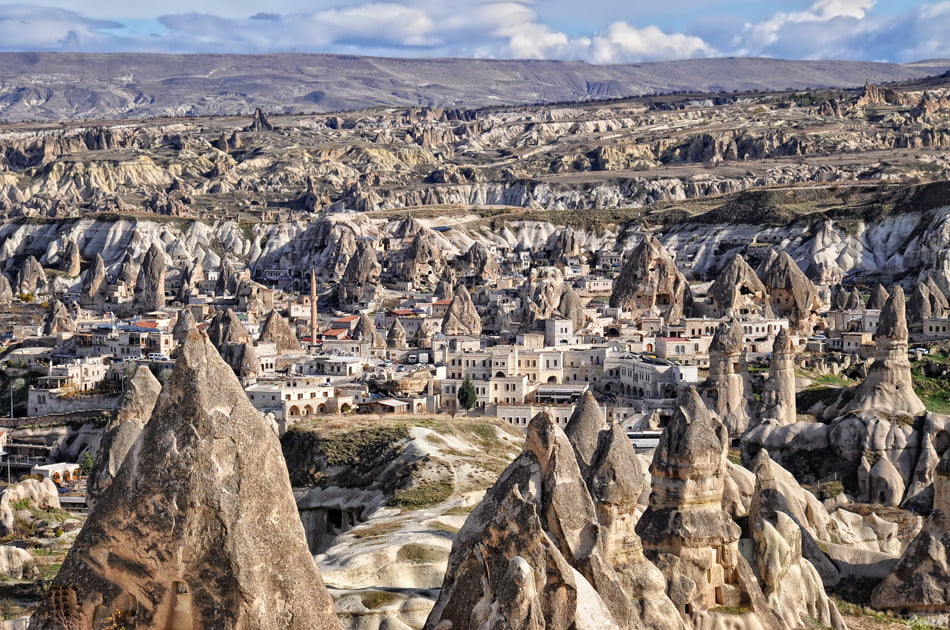Cappadocia in Turkey.

Cappadocia, which was once the Roman Empire province, is now a sprawling area in central Turkey, located between Aksaray in the west, Kayseri in the east and Nigde in the south. Modern Cappadocia is an amazing place, crossed by valleys and dotted with dramatic rock formations. Whatever your expectations will not go home disappointed.
Agencies organize different tours showing the highlights of Cappadocia. It also offers rental vehicles, motorcycles or scooters providing flexibility to stay, giving you the chance to make your own itinerary
However, the best way to orientate in Cappadocia is gently floating over the landscape in a hot air balloon. Also explore the valleys on foot. Or why not dazzled by the beauty of the scenery as the pioneers did European explorers on horseback.
60 million years ago formed the Taurus mountain range in southern Anatolia, while the chain formed Alpina in Europe. The formation of the chain of the Taurus Mountains caused numerous gullies and depressions in central Anatolia. During the centenarians the wind and rain have done magic on the rocks and created spectacular conical formations. The famous ‘fairy chimneys’ are now responsible for creating this majestic landscape lunatic.
However, Cappadocia is a supernatural landscape. Civilizations also left their mark on the region. That the Hittites were escavaron caves used as houses, stores, churches, finally a full city underground. To date, the caves are inhabited conical and warehouses used to store grapes, lemons, potatoes and bread for when winter comes.
The first inhabitants of the area were the first Christians, they dug thousands of churches, chapels and monasteries in their underground cities. These churches were decorated with paintings of medieval saints and although they have lost the vividness of the colors over time, can still be seen on the walls. Today, these images are still much reason to visit Cappadocia tourists.
Before the exploitation of tourism in the area, the rock formations were called kales, or ‘castles’. Nowadays, these structures are known as impotent peribacalari or ‘Fairy chimney’. The formations have a variety of shapes and sizes, yet most have a very characteristic phallic shape. the hood is hard rock erosion which protects the softer rock. Eventually, these hoods fall and the wind and rain cause them to collapse.